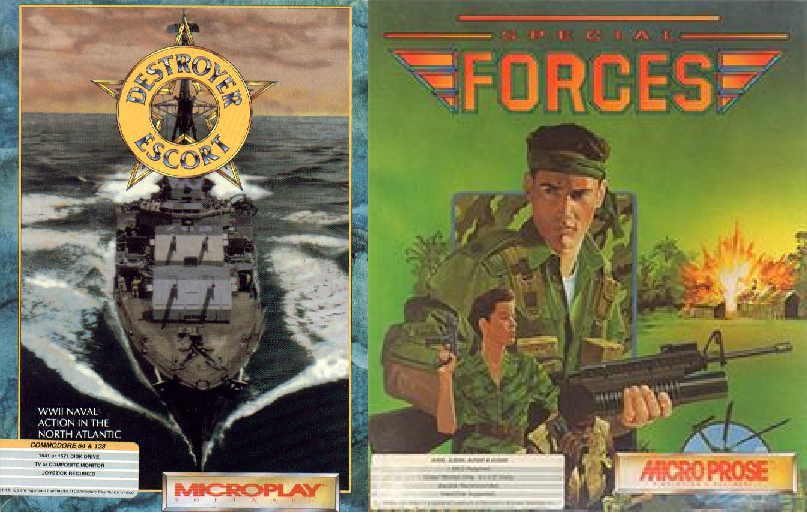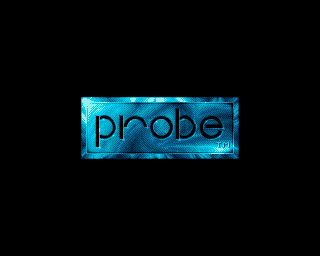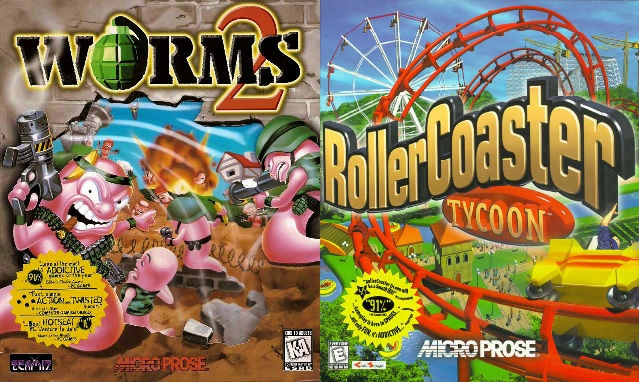MicroProse Clients & Affiliates Part I: The Special Label Era (1987-1992)
- baronsfel001
- Jul 26
- 11 min read

MicroProse may have been one of those companies that started with a vision and managed to take the world by storm on its own, but like many game developers such as contemporaries Sierra and Accolade, its biggest growth came from handling other peoples' games. MicroProse is often known as the house of Sid Meier strategy games and seminal military simulations F-15 Strike Eagle, Silent Service, Gunship & Stealth Fighter (plus Falcon today, but that is more of a roundabout story) and rightfully so, but prior to their genre diversification in the early 90s they were already involved in publishing an astonishing variety and forming relations that would chart the future of the company. But all that may have flown under the radar of anyone who did not pay close attention to a MicroProse product catalog of the time because none were published under the MicroProse brand.

While there were several one-off titles, others became parts of stories which took on lives of their own. A phenomenon more to be expected from major publishers like Sega or Microsoft, it is remarkable how many storied companies at one time or another became part of the MicroProse lexicon. Some names will be recognizable, but now it will be known how MicroProse helped to accelerate them to their future greatness.
Telecomsoft (& Its Labels)

Image is borrowed from the Finnish Retro Game Comparison Blog. This site is a recommended visit, having provided Yours Truly with a player-perspective evaluation of how the different ports of different games stack up among each other. Please pay the courtesy at FRGCB - Finnish Retro Game Comparison Blog, and always remember that clicking and reading is often the only official means of granting blog authors due appreciation for the content they volunteer to those with like interests.
This particular company needs its overview first because of how intertwined the publishing efforts with MicroProse became (culminating in MicroProse acquiring them outright, a story that will be repeated in today's post). This is important is because of how many European developers MicroProse published for in the US: in most cases those games were originally published in Europe under one of Telecomsoft's avian labels. That many were budget offerings (the Rainbird brand was created for more premium titles, particularly those for the 16-bit Atari ST & Amiga) shows how this was the approach taken by MicroProse to first branch out into new realms.
Of course, as European fans already know, Telecomsoft had its own rich independent history before they were acquired. That their model strongly paralleled what MicroProse would become is no coincidence; they were involved in getting pioneers such as David Braben (Elite) and wanna-be torch takers (Magnetic Scrolls) out the door. Pay close attention to the company crossovers in the rest of today's post.
Visage Software
Next to nothing is known about this developer, though MobyGames entries show most of involved later went on to have successful enough careers in the gaming industry. Their one contribution pertinent to the subject of today (and their only product under this company name) is their porting of Bally Midway's arcade scrolling shooter Xenophobe to home computers. These 8- and 16-bit computer (NOT console) releases show how MicroProse distinguished its publication lines as of 1989:
1) "MicroPlay" for third-party titles published in the US
2) "MicroStyle" for third-party titles published in Europe
3) "MPS Labs" for internally-developed MicroProse originals
Best Ever Games Company
Another one-off developer (both in terms of MicroProse publishing and having only produced a single game as a company), though employees in this one appear to have gone nowhere beyond a sole effort: Weird Dreams, a semi-cinematic mixed-genre puzzler that can be completed in barely a dozen minutes for those who have it figured out. This was originally published by Telecomsoft as a Rainbird game; the MicroPlay-branded US version has a conspicuous blank space in the credits screen where the Rainbird logo was. This game lives up to its name and is definitely an acquired taste, though as with other titles Telecomsoft made "premium" it offers greater immersion in the form of an included prologue novella by British journalist Rupert Goodwins.
Probe Software

The first of several "yes, those guys" to be covered today. They came into their own with porting efforts to computers and consoles in the 16-bit era before becoming part of the Acclaim Studios empire. Their contribution relevant today is Savage, an original fantasy arcade action platformer. That it was originally a Firebird game (the budget label of Telecomsoft) before making it to the US under the MicroPlay label shows part of a pattern of which genres were considered for more "casual" gaming audiences.
Sensible Software

Still remembered fondly today as one of Europe's premier association football simulation developers of the 1990s, believe it or not it was MicroProse who helped them get started in that genre. Though made for all the major computer platforms of the late 80s, only the MS-DOS port of Sensible's first sports title remains available on digital storefronts under its original MicroProse Soccer name. In Europe (where soccer is much more popular) it was deemed big enough to be published directly under the MicroProse label, but acquired even bigger change with its MicroPlay rebranding across the Atlantic via the official endorsement of Keith Van Eron, champion goalie for the Baltimore Blast (the same team, it so happens, MicroProse co-founder Bill Stealey would later purchase).
Realtime Games
Another British developer whose portfolio of games consists mostly of porting efforts, though it paid off in different ways: for instance, their efforts porting Elite to PC earned them the honor of developing the PC-exclusive 1991 updated re-release Elite Plus (which was published under the MicroPlay label). Their first claim to independent fame, one that continued to resonate long after the company itself folded, was the futuristic action-strategy title Carrier Command. In another parallel to be repeated, Rainbird published it in both Europe & the US (the MicroPlay label applied to the DOS version only). It followed with a spiritual successor on the same engine, Battle Command, but that was published worldwide only by Ocean Software.
Argonaut Software

Years before a certain partnership with Nintendo led to Star Fox becoming a household name, a small developer impressed Telecomsoft with a 3-D action shooter in the vein of Atari's arcade hit Star Wars for home computers, a perfect fit for the new Rainbird label called Starglider. Simple, but challenging, and including a novella by English former military writer James Follett, it put Telecomsoft where it wished for 16-bit premium games. Head developer Jez San, who would later become the first OBE recipient for video gaming, fulfilled the demand for a sequel: while Starglider was published by Rainbird worldwide, Starglider II was a MicroPlay title in the US.
Both these games are interesting on their own as development studies for the type of 3-D shooters that would culminate, first with Star Fox (which, it must be emphasized, was Argonaut's project as well), then gone mainstream for the 5th generation of consoles along with 3-D accelerator hardware on computers. The sequel is true polygonal 3-D (albeit 8-bit ports revert to the vector graphics of the first game) when such never became common on 16-bit systems due to how much it taxed the hardware. As with Carrier Command the best version of Starglider II is found on the Amiga, but as it was not widely distributed as a MicroPlay game for that platform it is best acquired if one can find the compilation MicroPlay Amiga Classics Trilogy (which likewise contains the only official MicroPlay distribution of the Amiga version of Carrier Command).
Geoff Crammond
Someone who should be a household name to retro enthusiasts of the racing genre, his first contact that led to MicroProse Formula One Grand Prix (also known by its US name World Circuit) was another racer published under different names: MicroStyle called it Stunt Car Racer (the first game of the MicroStyle brand) while MicroPlay preferred Stunt Track Racer. Players get to determine which is more fascinating: Crammond's take on the stunt racing genre, or that it amounts to the prototype of his work that would culminate in the Grand Prix/World Circuit franchise which lasted into the 21st century. The game has its fans today, and fine details from the handling to the damage modeling certainly exhibited Crammond's simulation potential.
Ed Hickman
Virtually concurrent with Stunt Track Racer an English industry veteran oversaw development of another Formula racing game, only seeming to try eating part of Sega's lunch by focusing on motorbikes instead of cars. The resemblance of RVF Honda (although published under the MicroPlay brand in the US, it was more expeditiously packaged seeing as the contents still carry MicroStyle branding) to Super Hang-On is astounding, but this being a MicroProse game it offers a deeper simulation aspect. Little is known of the development team, and this looks to be Ed Hickman's final lead project (as well as the only one sold in the US).
Aardvark Software
A developer that appears to have lasted a while despite never growing much (somehow they would get involved in porting some Duke Nukem entires), MicroProse offered them their first US exposure. Their one entry to that end was a billiards simulator called 3D Pool (the DOS port was packaged as Sharkey's 3D Pool). It delivers what it says, though even for 1989 audiovisuals were hardly state-of-the-art which very much makes this a casual game (hence why it was a Firebird title in Europe).
Source the Software House
Another relative unknown involved mostly in porting work (including Carrier Command to Commodore 64), their last two games were European exclusives picked up by MicroStyle. Reasons why multi-genre environmental-themed game Rainbow Warrior and sequential fighter Oriental Games never came to the US can be discerned for oneself. One extenuating factor worth mentioning: neither was ported to DOS, which was long the dominant computing platform in America.
Maelstrom Games
Like Richard Garriott with Origin, Mike Singleton started his own company after failed efforts to find a publisher led to resorting to self-publish (and the rest is history). Some of his best earlier development days were for MicroProse, who acquired the brands of Telecomsoft in 1989 and launched a sub-brand of both Rainbird and MicroPlay called the Masters of Strategy Series. That new label's premiere game was Singleton's/Maelstrom's Midwinter, a grand take on combat games which starts with a solo warrior (and his skis) acquiring resources and recruiting support towards liberation of a frozen island settlement-by-settlement.
Midwinter was sophisticated, a fun return for those who invested in it but not to those turned-off by the at-times unfair challenge. The sequel, Flames of Freedom, switched to the tropics but was essentially a rehash. Singleton's final contribution for MicroProse was the space strategy entry Starlord, distributed exclusively in Europe (until it came to digital storefronts in recent years) and not to be confused with Star Lords which was the working title of what became Master of Orion. He would produce some work for LucasArts on the original Xbox and pass away in 2012.
Imagineering
Absolute Entertainment is generally known for the console efforts in the 80s & 90s, the home of licenses like Star Trek or The Simpsons along with veteran developers from the early days of the video game industry (Garry Kitchen & David Crane) insisting their names accordingly be part of the title. While they frequently dabbled in military games they were not known for the sophistication of their simulations, yet one deemed good enough for the MicroPlay label was Destroyer Escort. That it got little exposure is a fact one may make as they will, since (bizarrely for 1989) it was a Commodore 64 exclusive.
Core Design

Long before Lara Croft was conceived, let alone became the cash cow that ultimately broke her original developers out of business, Derby was seeing porting work and mascot exploration. One, Chuck Rock, was their biggest multiplatform hit for the first half of the 90s. But from even before then, there was a rip-off of Indiana Jones that in early stages was going to be the star of Tomb Raider.
Since it was a an action platformer, the first Rick Dangerous was picked up by Firebird and made it over to the US as a MicroPlay game in 1989. Its sequel, simply titled Rick Dangerous 2, switched to a science fiction superhero theme and was published by MicroStyle but never [officially] left Europe. These two semi-original side scrollers coded for computers make up the MicroProse chapter of a rich game history.
Graftgold
Among the numerous British startups on the ZX Spectrum who grew from there, their involvement with MicroProse seems to have been due to their games being published by Telecomsoft labels at the point they were acquired by MicroProse. Bushido, a 1989 Commodore 64 exclusive, appears to be among the Firebird titles that MicroProse reaped the benefits from. The 3-D shooter Simulcra received MicroStyle branding, and its exclusivity to Atari ST & Amiga ensured it would remain in Europe.
Vectordean
The best known property of this yet-another-short-term-developer is the James Pond parody series, best known in turn due to all its entries (3 regular, 1 spinoff) having been published by Electronic Arts for Sega Genesis. That franchise was made, and in general best on, Amiga which is the platform Vectordean best specialized in, though Atari ST was treated just as well so long as it remained viable. One exclusive to those two computers (thus never made it to America) was a Norse-themed platformer, Fire & Brimstone, published under the Firebird label which MicroProse owned but kept using for casual games as of 1990.
Intergalactic Development
This short-lived American developer tied to MicroProse in two separate but interesting ways. First, they were the new home of historian Dr. Ed Bever after his collaborations with Sid Meier on Pirates! as well as the Command Series historical strategy trilogy. Second, the premiere game of their key franchise, UMS: The Universal Military Simulator (published by, once again, Telecomsoft's Rainbird label) had its sequel and add-on disk make part of the Master of Strategy Series.
Ozark Softscape
In the 1980s all works by multiplayer pioneer Dan Bunten and his team had been published by Electronic Arts. For the 90s his final two contributions to his gaming legacy, Command H.Q. & Global Conquest, found a new label as part of MicroPlay's Master of Strategy Series. Neither were groundbreaking in the technical sense nor really tread new gaming ground, but the new twist was (as can be expected from Bunten) the focus on modem-based multiplayer.
Software Sorcery
One of those blink-and-you-miss-it developers with a small but impactful portfolio for fans of the genres they touched, their first product was published as a MicroPlay game and may be their most unique: Sea Rogue, a simulator of the undersea salvage business which included well-researched real-life wrecks to explore in their proper locations. They had a generic name, yet it appeared for a time Software Sorcery would specialize in niches in nautical genres touched little by others: they next self-published the WWI dreadnaught simulator Jutland, Time Warner next got the Ticonderoga-class simulator AEGIS: Guardian of the Fleet, yet after Sierra picked them up for the modern submarine simulator Fast Attack it would be their penultimate work. Their swan song, Conqueror: A.D. 1086, totally switched genres to Medieval strategy (in a territorial conquest premise not unlike that of MicroProse's Sword of the Samurai), which did not manifest much market success but is still available digitally today.
Sleepless Knights
This one is questionable: while it is not an MPS Labs game, the development team for Special Forces (marketed as sequel to the 1987 stealthy run-and-gun Airborne Ranger) has it as their only credited work under the Sleepless Knights name (plus several members thereof would continue working at MicroProse for some time after). Upgrades from Airborne Ranger include command of a fireteam rather than a lone individual, less generic scenarios, and greater variety of equipment with less randomization (the 16 maps are fixed). Fitting for Special Forces being his first head project, designer Jim Bambra would later found and helm Pivotal Games which produced the Conflict series of fireteam shooters.
Pausing For Now
The MicroPlay & MicroStyle brands were retired in 1992, making external developments identifiable only by lack of the MPS Labs logo. Some of the best was still yet to come, but that will have to wait for this blog's 75th post. This was not comprehensive of the stated range of time either, but there remain some interesting stories to tell for which MicroPlay (and perhaps another label or two) pertains at the start.





Comments